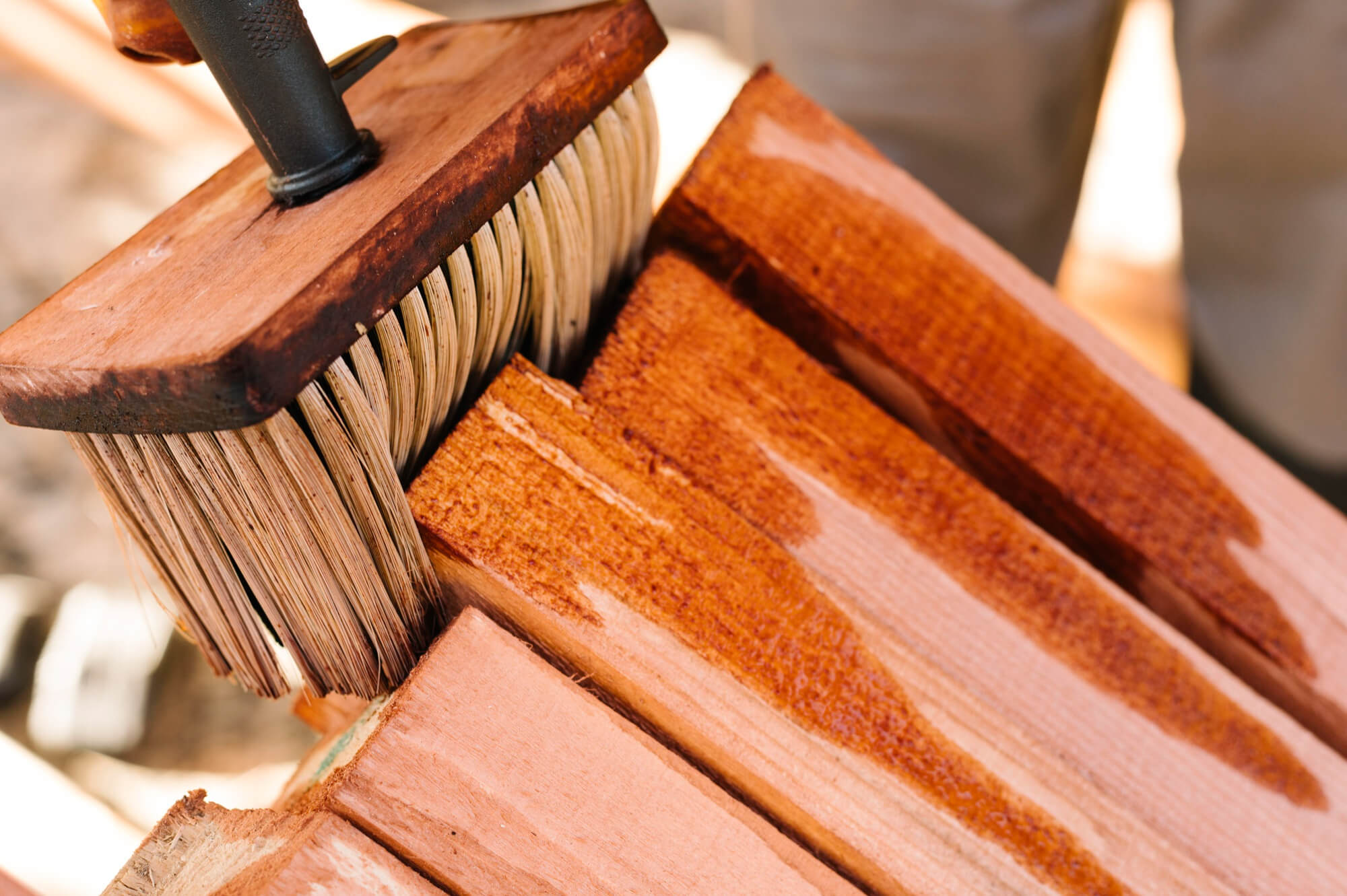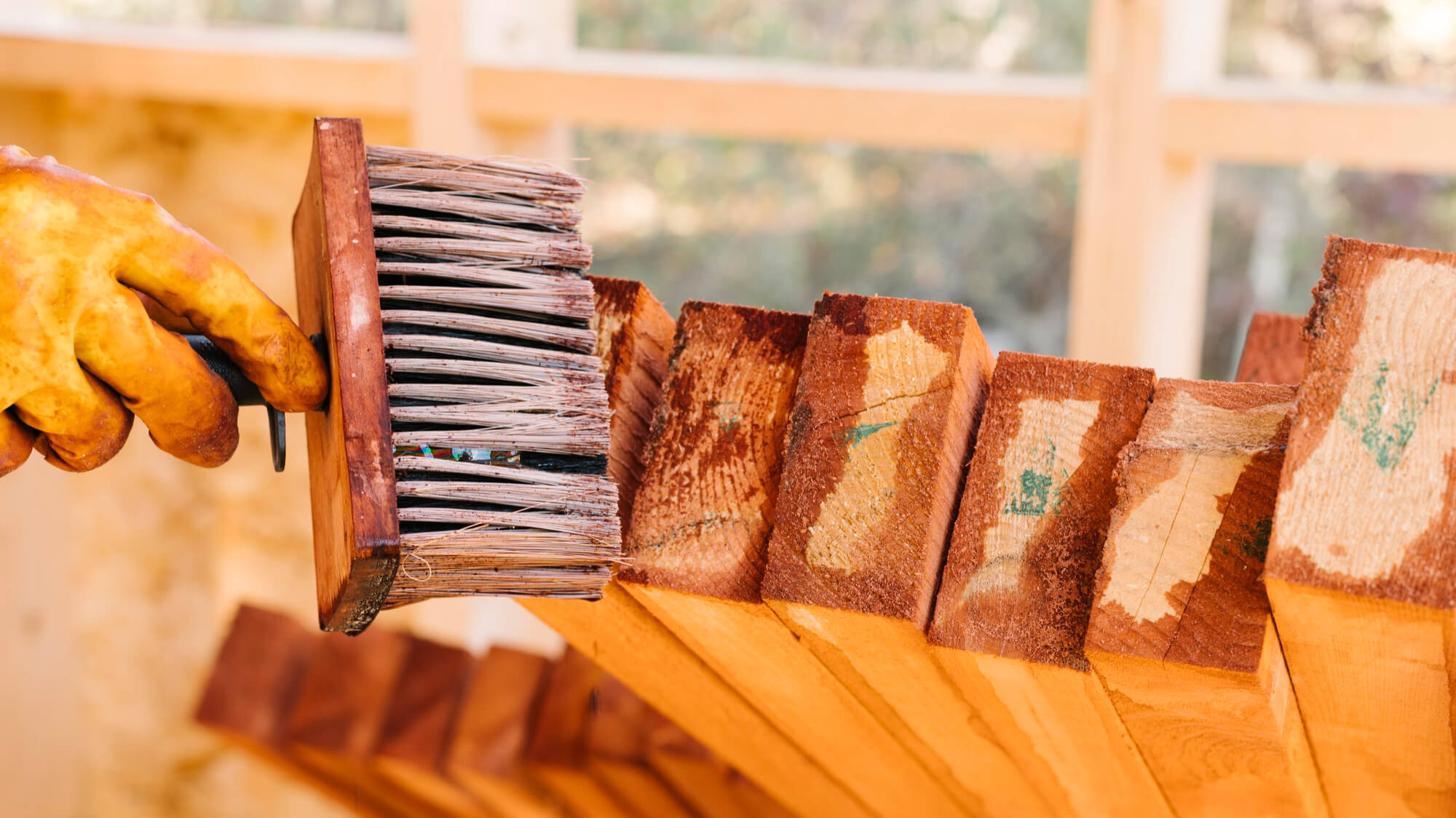When it comes to wood protection and enhancement, staining and sealing are two popular methods. Though both processes serve the purpose of maintaining the wood’s durability and appearance, they have distinct differences. This article, brought to you by Weiler Painting, will explore the differences between staining and sealing wood and help you determine the best method for your needs.
Staining Wood
Purpose of Staining
Staining wood serves two primary purposes:
• Enhancing wood’s appearance: Stains bring out the wood’s natural beauty by emphasizing its grain patterns and adding depth to its color.
• Providing some protection: Stains offer modest protection against the elements, UV damage, and wear and tear.
Types of Stains
There are various types of wood stains available, including:
• Oil-based stains penetrate deep into the wood, providing a rich, long-lasting color. They’re durable and water-repellent but may take longer to dry.
• Water-based stains are eco-friendly, easy to clean up and dry quickly. However, they may not be as long-lasting as oil-based stains.
• Gel stains: These thick stains are great for vertical surfaces or difficult-to-stain woods, as they don’t drip and provide even coverage.
Application Process
When staining wood, follow these steps:
• Prepare the surface: Sand the wood surface to remove imperfections and ensure proper stain absorption.
• Clean the wood: Remove dust and debris from the surface to ensure a smooth, even application.
• Apply the stain: Use a brush or cloth to apply the dye toward the wood grain, providing even coverage.
Wipe off excess stain: Remove any excess using a clean cloth after the paint has penetrated for the recommended time.
• Allow to dry: Let the paint dry completely before adding coats or sealing.
Sealing Wood
Purpose of Sealing
Sealing wood is primarily meant to protect the surface from moisture, UV damage, and other environmental factors. It also helps to:
• Preserve the wood’s appearance: A sealant can maintain the wood’s color and appearance, whether stained or left natural.
• Increase durability: Proper sealing helps to protect the wood from wear and tear, ensuring its longevity.
Types of Sealants
There are several types of wood sealants available, including:
• Water-based sealants: These are eco-friendly, low-odor, and dry quickly. However, they may not be as durable as oil-based sealants.
• Oil-based sealants offer excellent protection and durability but may take longer to dry and emit more pungent odors.
• Spar urethane: This specific type of sealant designed for outdoor wood offers increased UV and moisture resistance.
Application Process
To seal the wood, follow these steps:
Prepare the surface: Ensure the wood is clean and dry; if stained, the stain is fully cured.
Apply the sealant: Use a brush or roller to apply the glue, working in the direction of the wood grain.
Allow to dry: Follow the manufacturer’s instructions for drying time and apply additional coats as needed for optimal protection.
Choosing Between Staining and Sealing
The choice between staining and sealing depends on your goals for the wood’s appearance and protection level. Consider the following:
• Aesthetic preferences: If you want to enhance the wood’s appearance with a specific color, staining is the best option.
• Level of protection: If you’re primarily concerned with protecting the wood from moisture, UV damage, and wear, sealing is the way to go.
• Combined approach:
For the best results, consider a combined approach by staining the wood for color enhancement and then sealing it for optimal protection.
Conclusion
Understanding the differences between staining and sealing wood will help you make an informed finding based on your desired appearance and protection level. Staining enhances the wood’s natural beauty and provides some protection while sealing focuses on preserving the wood’s appearance and ensuring its longevity. By choosing the suitable method or combining staining and sealing, you can achieve a beautiful, durable wood surface that will stand the test of time.



